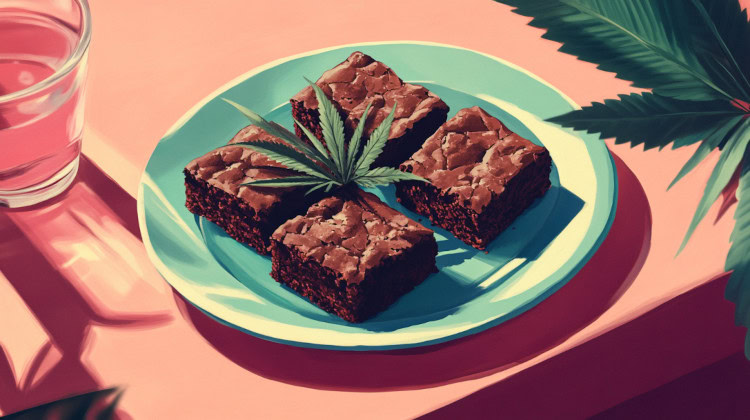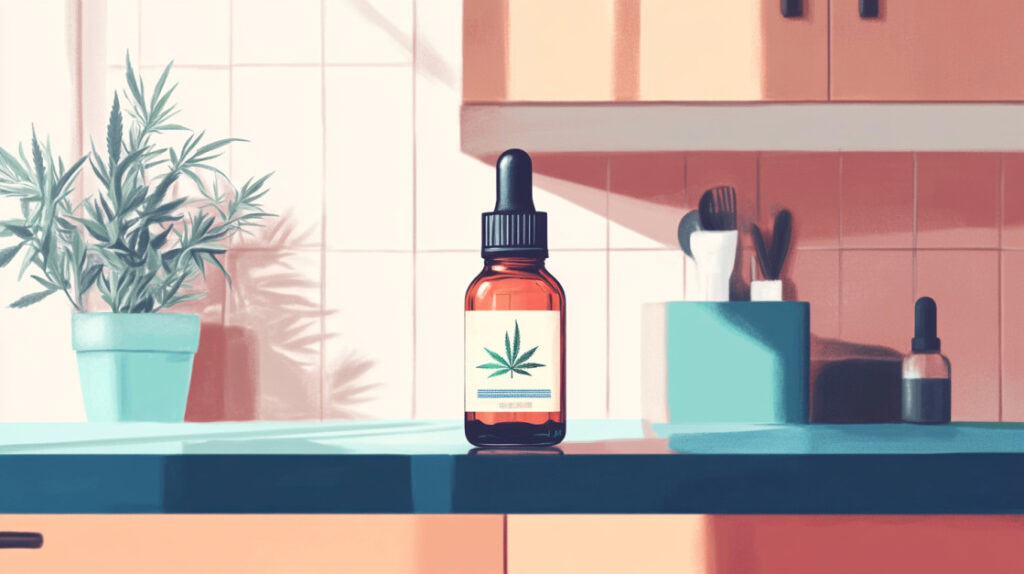As cannabis becomes more popular and accessible, the concentration of the intoxicating cannabinoid THC (tetrahydrocannabinol) in products is increasing. THC is the primary compound in cannabis, responsible for the "high" sensation users experience. While great in the right doses, too much can result in unwanted outcomes.
Many users, particularly novices and newcomers, wonder what is considered high THC concentration and how much they need to have an ideal outcome. With scores of cannabis products now available and many additional factors impacting the experience, it’s best for consumers to understand what is considered high THC concentration and what defines high THC levels.
Why Does THC Content Matter?
THC content is integral to shaping the cannabis experience, namely the effects each consumer feels. The concentration of compounds like THC are significant to those who need the precise dosage to experience beneficial outcomes. The concern is also warranted for users who want to avoid the adverse effects of overintoxication.
Several potential factors make THC concentration that much more complex and potentially confusing. Some significant elements include:
- Personal Factors: Everyone reacts differently to THC based on the make up of their endocannabinoid system, genetic factors, and tolerance. Some people require only a small amount of THC, while others may need higher doses to feel the desired effect.
- Negative Effects: Higher doses of THC can lead to unwanted side effects, including increased anxiety or paranoia, in some users - far from the usual outcomes centered around physical and mental relief.
- Product Variability: The wide range of cannabis products on the market means that THC levels can vary greatly. Edibles, tinctures, and vape pens can have different THC concentrations. Additionally, varying product formulations can lead to other effects and outcomes, even if products share similar dosing characteristics.1
What Is Considered High THC in Common Products?

What's considered high THC varies based on individual tolerance, product type, and even location-based legislation. In some regions, legal THC limits may change by state and local laws, influencing what is a high-dose product. In many states, recreational products may have stricter limits compared to medical options, with some states allowing patients access to items with higher THC concentrations.
Additionally, it's important to note that while THC levels are a significant factor, the whole plant profile—including other cannabinoids and terpenes—plays a crucial role in the overall effects.
Ultimately, a high dose for one person might be standard for another. Personal tolerance and preferred consumption method(s) matter significantly.
That said, here's a general breakdown of what's considered high THC across popular cannabis products:
- Flower: Anything over 20-24% THC is considered a high dose to most people. Most flower sold in dispensaries today range between 15% and 30% THC, with some strains testing even higher. While 30% THC may seem more potent, many users report that anything above 24% THC can be overwhelming, especially for those with lower tolerance. Also, with many states now scrutinizing labs for reported THC inflation, the listed concentration may not always be as high as the packaging states.
- Edibles: Edibles are dosed in milligrams rather than percentages. A dose of 2.5-5mg of THC is typically considered low or microdosed. In most states, 5-10mg tends to be the legal serving per piece. Once past 10mg or 20mg, most would say a product falls into the high THC territory. Additionally, with edibles increasing in potency once metabolized in the liver, consumers should remember that effects can be felt more intensely than the same concentration when smoked or vaped.
- Concentrates: Cannabis concentrates used in dabs and vape pens typically have THC levels of 60-90%, making them some of the most potent products available. However, some products can exceed 90%. These concentration levels are considered high doses and not ideal for newcomers or anyone with a low tolerance.
- Tinctures: These products can range from 2.5mg to 50mg per dose and are absorbed through the veins under the tongue, making the effects fast-acting for most individuals. A small amount may be swallowed and thus broken down by the liver, potentially creating a slightly more potent effect.
- Capsules and Tablets: These products can range from 2.5mg to 50mg per dose. Because they act like edibles, consumers should use caution and remember that effects can increase once metabolized in the liver.
How Much THC is Too Much?

Determining how much THC is too much varies by person. Overconsumption can happen at any dose, especially for those new to cannabis or with a low tolerance. Even a small amount, like a 2.5mg edible, may cause intense effects for some individuals, leading to discomfort rather than enjoyment.
Common symptoms of overconsumption include:2
- Altered perception
- Anxiety
- Paranoia
- Dizziness
- Fear
- Depression
- Nausea
- Fatigue
Any flower over 20% THC may be overwhelming for some users. With edibles, doses above 5mg or 10mg are generally too much for beginners and can lead to negative experiences like "greening out," where a person feels nauseous or too high after consuming excessive THC levels. If making your own edibles, use an edibles calculator to help minimize any risks of including too much THC in a serving.
Additionally, vape pens and dabs often offer more concentrated THC levels and should be used with caution, especially for newcomers. A dab dosing chart can help reduce the risk of overconsumption.
While concentration does impact the severity of the effects felt, consumers should remember that THC percentage isn't the only factor. The whole plant profile, including minor cannabinoids, terpenes, and other compounds, all play a part, producing varying effects on consumers.
The Best Way to Regulate THC Use

Regulating consumption is fundamental to avoiding the unwanted effects of THC over-intoxication. Anyone looking to achieve this goal should consider using one or more of the following methods:
- Start Low and Go Slow: This tried-and-true method starts with a low dose and gradually increases the concentration if needed. With edibles, starting with a serving of around 2.5-5mg of THC is typically recommended. Consumers should then wait between 30 minutes to two hours before consuming any more. If smoking or vaping, take one short pull, wait 15 minutes, and then decide if another is needed.1
- THC Ratioed Products: Products combining THC with CBD may provide a more balanced experience. Look for items listed with a 1:1 ratio for a balanced CBD:THC product. Numerous other ratios exist, including 25:1 CBD:THC options, which should produce little to no intoxicating effects.
- Choose Low THC Strains: These strains generally have a THC content of 10-15%, providing milder effects than traditional high THC concentration options.
- Quality Over Quantity: Higher THC doesn't always mean better. A well-cultivated flower with a lower THC percentage can still deliver significant results, especially if it has a rich, robust cannabinoid and terpene profile.
References
- MacCallum CA, Russo EB. Practical considerations in medical cannabis administration and dosing. European Journal of Internal Medicine. 2018;49(49):12-19. doi:https://doi.org/10.1016/j.ejim.2018.01.004
↩︎ - Turner AR, Spurling BC, Agrawal S. Marijuana Toxicity. In: StatPearls [Internet]. StatPearls Publishing; 2023. https://www.ncbi.nlm.nih.gov/books/NBK430823/ ↩︎
The information in this article and any included images or charts are for educational purposes only. This information is neither a substitute for, nor does it replace, professional legal advice or medical advice, diagnosis, or treatment. If you have any concerns or questions about laws, regulations, or your health, you should always consult with an attorney, physician or other licensed professional.




